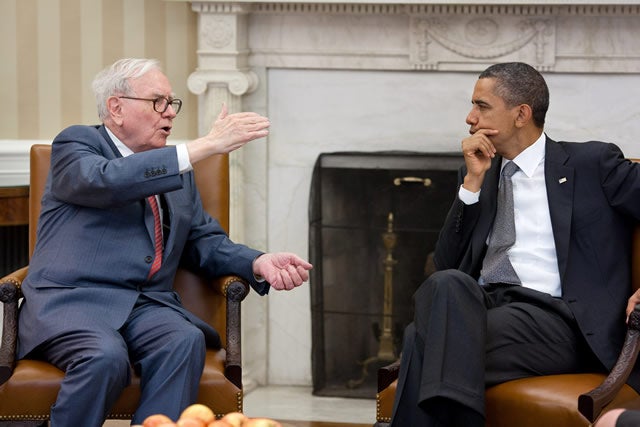President Obama’s infamous “Buffett Rule,” which would set a 30 percent minimum effective tax rate for families and businesses with incomes greater than $1 million, would raise a paltry $47 billion over 10 years according to a recent report by the Joint Committee on Taxation.
During that same timeframe, President Obama’s budget would ring up an additional $6.7 trillion in new debt on the national credit card. That would leave the national debt at 76.5 percent of the economy in 2022. And that assumes $2 trillion of higher revenue—not including revenue from the Buffett Rule—from tax hikes that are unlikely to occur because they would devastate the economy.
Adding in the infinitesimal amount of revenue from the Buffett Rule would lower the debt President Obama plans to pile up as a percentage of the economy by about two-tenths of one percent.
In contrast, the budget proposed by Representative Paul Ryan (R–WI) would, by cutting spending, reduce the debt as a portion of the economy from 73.2 percent today to 62.3 percent in 2022, the end of the current budget window. That’s a 15 percent reduction in the debt. Impressive result. And the Ryan plan would put us on a path to reduce the debt even further in future years because of its bold plan to reform Medicare and fix Medicaid.
If you’re scoring at home, that’s a 15 percent reduction of the debt for Ryan versus a fraction of a percent (0.2 percent) for the Buffett Rule. Ryan’s budget lowers the debt 62 times more than the Buffett Rule. That’s more than a blowout.
It is now clear that the Buffett Rule is all about the politics of class warfare. It has nothing to do with debt reduction. That should come as no surprise. It is impossible to tax the wealthy enough to remotely cover the deficits the President wants to run up.
Even with the almost undetectable change in the debt, some will still claim the Buffett Rule is necessary for purposes of fairness. But the Buffett Rule would hit hardest the businesses that employ the most workers and pay their taxes through the individual income tax code. This would hurt middle- and low-income workers, because job creators would have to cut back on hiring or forego paying their current workers higher wages. So much for fairness.
To add insult to injury, the estimate of increased revenue from the Buffett Rule is based on the assumption that businesses won’t cut back on hiring due to the higher tax. Take into account this negative feedback and the Buffett Rule will certainly raise far less than $47 billion.
President Obama should drop his poorly conceived Buffett Rule and focus on cutting spending to get the debt under control. That is the only way to lower the debt, as Ryan’s budget shows.






























